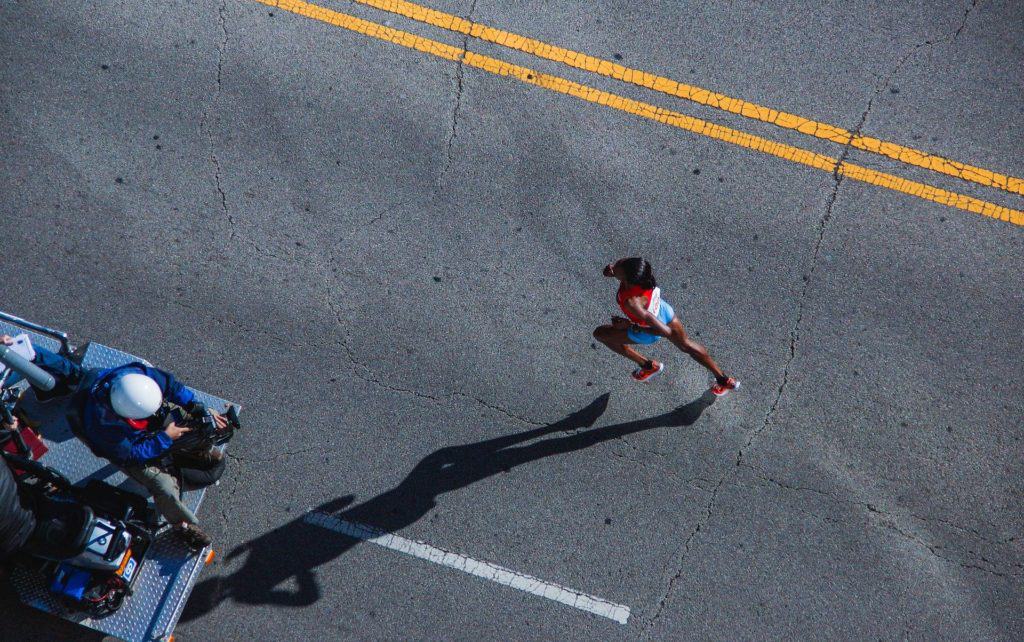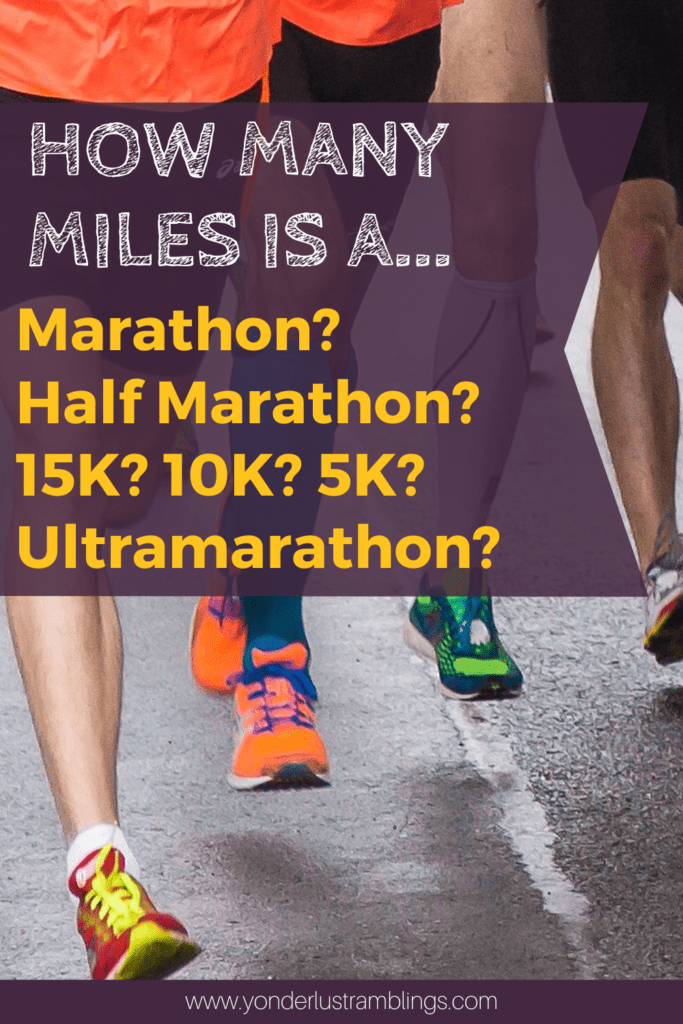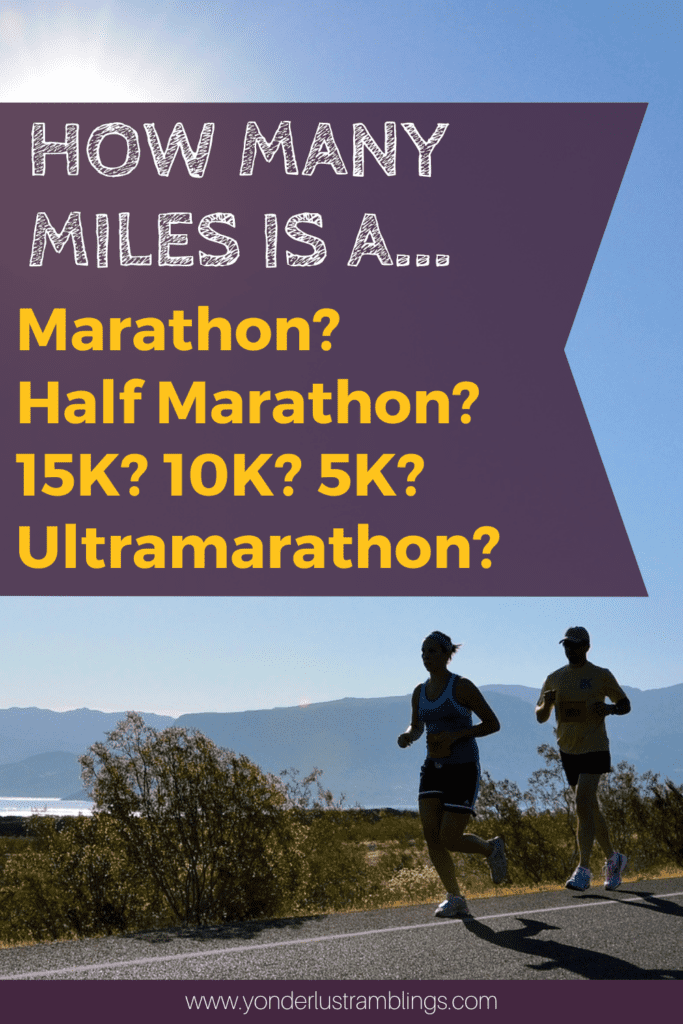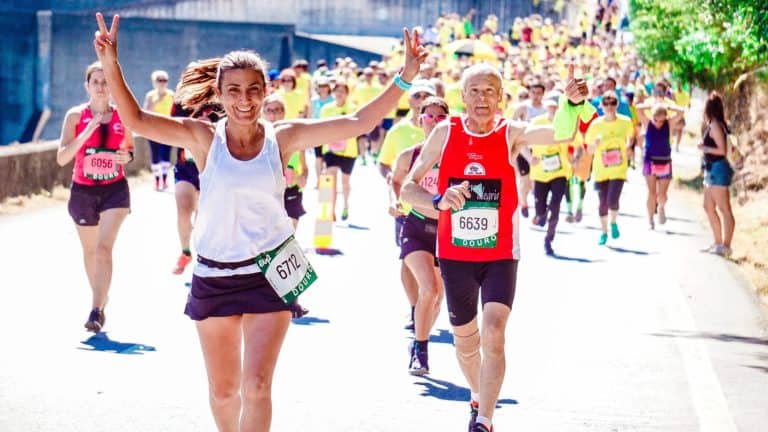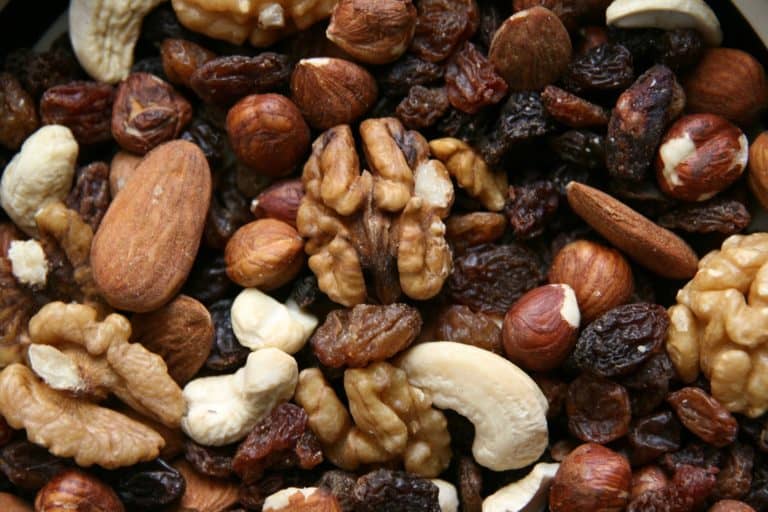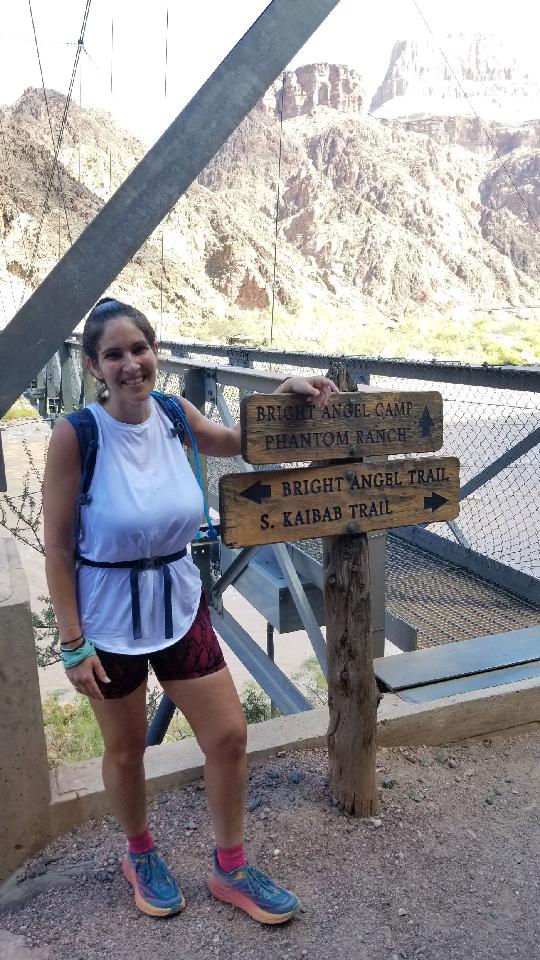How Many Miles is a Marathon, Half Marathon, 15K, 10K, 5K, and Ultra?
Hang around a group of runners for more than 5 minutes, and you are bound to hear them throwing around race distances, times, and training regimens. Runners love to talk about running and races, but what exactly are the different running distances, and how far are each of them? How many miles is a marathon or half marathon? Or what about all the “k’s”? Get to know all the running distances, including: 5k, 10k, 15k, Half Marathon, Marathon, and Ultra Marathon.
Disclosure: Below are some affiliate links-these are all products I highly recommend. I won’t make any recommendations on this page that I haven’t tested or personally used!
But before we go there, let’s take a look at how kilometers convert to miles, to have a better understanding of the different distances.
>>>Kilometer to Mile Converter
Table of Contents
How Many Miles is a Marathon, Half Marathon, 15K, 10K, 5K, and Ultra?
Since most of us can visualize our old high school track, or have seen them portrayed, it is helpful to keep in mind that 4 laps on a standard track equals 1 mile. However, for enjoyment purposes, I would not recommend doing all of your training on a standard track. Running a half marathon distance, for example, is 53 laps on a standard track. Training on a standard track might quickly lead to monotony and therefore burnout during your training.
Now let’s get into the distances:
How Many Miles is a 5K?
- A 5k is 3.1 miles
- A 5k is half the distance of a 10k, and ⅓ the distance of a 15k
How Long Will It Take Me to Run a 5K?
- At a 10 mile an hour average pace, a 5k will take about 31 minutes to run
How Many Miles is a 10K?
- a 10k is 6.2 miles
- A 10k is twice as long as a 5k, and ⅔ the distance of a 15k
How Long Will it Take Me to Run a 10K?
- At a 10 minute a mile pace average, it would take you about 1 hour and 2 minutes to run
How Many Miles is a 15K?
- a 15k is 9.3 miles
- A 15k is the equivalent of a 5k and 10k combined back to back
How Long Will it Take Me to Run a 15K?
- At a 10 minute a mile pace average, it would take you about 1 hour and 33 minutes
How Many Miles is a Half Marathon?
- a Half Marathon is 13.1 miles (or 53 laps around a standard track)
How Long Will it Take Me to Run a Half Marathon?
- at a 10 minute a mile pace average, it would take you about 2 hours and 11 minutes
How Many Miles is a Marathon?
- a full marathon is 26.2 miles (or 105.5 laps around a standard track)
How Long Will it Take Me to Run a Marathon?
- at a 10 minute a mile pace average, it would take about 4 hours and 22 minutes
How Many Miles is an Ultramarathon?
- any distance longer than a full marathon
- distances can range from anywhere including 30 miles to 200 miles, sometimes even more!
>Did you know the world’s longest Ultramarathon is New York’s Self Transcendence race, totaling 3,100 miles in length!
History of Running Distances:
Running has been engrained in history for quite some time now, but the marathon distance arguably has the longest and most commonly known history. The modern marathon comes from ancient Greece, when the Greek messenger Pheidippides ran 25 miles from Marathon to Athens to announce the Greek victory over the Persians.
The first modern marathon was run at the 1896 Olympics, but was actually 25 miles in length. This was changed to the modern marathon distance of 26.2 miles at the 1908 Olympics in London. Since that time, 26.2 has been the official marathon distance.
>Did you know the oldest marathon in the United States is the Boston Marathon, run annually since 1897?
So What is Considered a Good Running Pace?
My simple answer to this is whatever your pace is! You can always work to improve your pace and performance, but the important thing is that you get out there and give it your best shot, no matter what your pace is. Because anything is more than zero.
That being said, a 9 to 11 minute mile is often considered a good average range per mile running. But there are a lot of different factors that can determine a running pace:
- Fitness Level – your current fitness level can help to give you a foundation for running longer distances, versus starting from scratch
- Experience – related to fitness level, but do you have running experience to build on? This could be both physical experience, or mental knowledge of proper running mechanics, ways to stay hydrated, etc.
- Age – age can play a role in your running pace
- Nutrition and Hydration – how you keep your body fueled can play a MAJOR role in your running pace. Here’s a hint, it is vitally important that you properly fuel your body with the best runners nutrition, as well as stay consistently hydrated! (Check out my shop for some handy printable organizers and checklists to help you track and meet your daily nutrition and hydration needs!)
- Weather – believe it or not, a really windy day can affect your running pace, as well as a number of other outdoor elements, such as rain or heat.
>>>There are handy ways to help you predict what your racing pace might be for any of the above referenced distances. Learn how to predict your pace with this Racing Finish Time Predictor!
>>Did you know the current marathon record holder is Kenyan Eliud Kipchoge, who set a marathon record of 2:01:39 at the Berlin Marathon in 2018!
Besides Distance, What Makes These Race Distances Different?
Besides the obvious distance differences, what else makes a 5k different from a 15k, or a half marathon different from a marathon?
- Terrain: for starters, there are different surfaces you can run races on. Races can be run on roads, or they can be run on trails. Both require different running gear such as road running shoes or trail running shoes.
- Locations: longer distances, such as ultra marathons that are 100 miles in length, for example, might not be found in the heart of a major metropolitan city. Many of these types of all day or multi-day races are found in parks and areas with plenty of wide open spaces that can be designated for runners.
- Preparation and Training: this goes without saying that training for a 5k is going to look different than training for a full marathon. Both take determination, dedication, and an intentional training plan, but there will be different logistics.
- Mood: the mood of certain races can be different, depending on their distance. 5k races are often hailed as “fun runs” with participants dressing up in costumes, and with plenty of post race parties. Then there are marathons that have a respectful mood in honor of something (Boston Marathon), and then there are ultra marathons that are more serious in nature, with gritty and rugged runners pushing themselves to their limits, with fun often being at least temporarily put on the back burner as they push on!
I’ve Never Run Before, Which Distance Should I Start With?
A 5k distance is often considered the ideal newbie distance for those runners looking to introduce themselves to running distances and a training regimen. It is recommended to get a feel for a shorter distance and see how you feel, then you will have a better idea of how you will respond to a longer distance. Once you get addicted to 5k races, you’ll be ready to aim for the longer distances!
No matter which distance you are pursuing at this stage, make sure to train properly and safely. There are some foundational training cornerstones that should be followed no matter what distance you are training for:
1. Formulate a running plan – if you tell yourself you will run “when I have time”, something will always come up. The pros will tell you that in order to stick with a training plan, you have to be very intentional. Schedule your running days each week, and you will find that other things have a way of working around them. Having a running plan is #1 for a reason, you have to be intentional in order to follow through with training.
>>>Get Your 16 Week Half Marathon and Full Marathon Training Calendars HERE!!!
2. Schedule your runs
This goes hand in hand with #1. Make sure that you schedule your running days each week. I find that it works best for me to have the same 3 days each week be my dedicated “running days”. I like to schedule my running days each week, for several months out even.
3. Pick a destination race
Figure out what motivates you to run. Otherwise, you will run the risk of burnout. It happens to everyone. One option for motivation is to pick a destination race! Merge your passion for running and racing with the opportunity to see and discover a new place! Or rediscover a familiar place in a whole new way!
>>MORE: Discover 3 ways to plan the perfect destination “runcation” for you!!!
For example, you can visit Yellowstone National Park as a typical tourist, or you can run the annual marathon at Yellowstone National Park and see the park’s other side, from a truly unique perspective. Running is the best way to really get to know a destination, and it is guaranteed to give you some extra motivation on those tired days.
MORE: Check out two of my favorite destination races in GREENLAND’S frozen ice cap, and CHINA’s Great Wall!
4. Schedule rest
Just as you need to schedule your running days, be sure to schedule your rest days. It will be tempting to get in just “one more” good training run, especially if you are feeling great that day, but rest is critically important to deterring injury.
You can always continue to improve your performance after a rest day, but an injury dealt by ignoring a rest day cannot be easily overcome, and can derail your entire training process.
5. Schedule strength training, cross training, and stretching
One more thing to schedule, in addition to running days and rest days, are your strength training/cross training/stretching days. There should be several of these each week.
Strength training and cross training can take many different forms, just be sure to engage in activity that exercises various muscle groups. This will enable your body to run as a well oiled machine in all areas, not just your legs.
Some examples of cross training and strength training could be weight lifting, HIIT (high intensity interval training) routines, kayaking, cycling, walking, hiking, yoga, Pilates, etc. And don’t forget to stretch and foam roll also!
6. Invest in proper nutrition
You are only as good as the fuel you put in. You may think that running more, running faster, or running further is what makes you a better runner, but it really is so much about nutrition and hydration!
Check out this sister post for some ideas of beneficial runners foods, and also don’t miss my spotlight post on the running power food that is peanut butter! Hydration is also key. You can’t just chug a bottle of water before your run, you need to consistently hydrate each day, all day!
MORE: Want to make tracking your nutrition and hydration a cinch? Check out the shop for meal planning and hydration trackers and checklists, along with other running resources!
7. Increase mileage intentionally and gradually
You may be tempted to push yourself to go faster, but don’t! There is nothing worse than an injury you can’t come back from! Invest in a good training program that comes with a training calendar, one that shows you how to gradually, intentionally, and in increments, increase your mileage each week.
8. Listen to your body
Listen to your body. It is ok to take an extra day off if your body is telling you to.
9. Run outside and vary your routes
Combating boredom and burnout are reality of any running training plan for any distance. One way to combat boredom and burnout is to run outside as much as possible, as compared to running inside on a treadmill, and also vary your routes when you can. Run in new places, go different directions, take a new turn, etc!
10. Choose solo or group
Figure out what motivates you to run. Some like the mind clearing de-stressor of running alone with their thoughts, and that is their motivation. Some people need the morale and camaraderie of a group to motivate them or help keep them accountable. There are many ways to find running groups these days, if that is your thing.
11. Get the right gear
Invest in the right gear, better yet, invest in the best gear. Comfort and performance go hand in hand. Running gear often is expensive, but invest in it. It will also help prevent injury as well. Here are a few of the running basics you will need for any training program at any distance:
- Shoes: the right shoes depend on the surface that you plan to run on. For road running, go with Brooks Glycerins for their support and cushioning. For trail running, you can’t beat the reputation of HOKA One One Speedgoats!
- Socks: Your shoes are only as good as the socks you pair them with! Running can wreak havoc on your feet if you do not have proper socks. The best thing you can do is surround your feet with a superbly breathable sock that will help proactively prevent blister development. I used to get blisters all the time on my long runs, until I discovered Hilly Twin Skin socks. The “twin skin” layers help to prevent the friction that causes blisters. Haven’t had a single blister since switching to Twin Skins.
- Water Hydration System: your water hydration system will depend on your route and your distance mostly. If you are training in a city park with water fountains available, then that might very well be your hydration system. But for other situations, it is critical that you have some form of water system, especially for longer runs and more remote runs. I love my insulated HydroFlask for everyday use, and my Camelbak hydration vest for my longer runs, where I can hydrate on the go with the built in 2 liter water hydration bladder! Another great option that I often go with is a water bottle belt, which can carry most sizes of bottles, as well as storage for personal items.
- Personal Items: you will often need a way to keep your keys, phone, money, etc. on your person during your runs. If you opt with a water hydration vest or water bottle belt, there will be storage included for these items. Or maybe you would prefer a pair of running shorts or pants with snug built in pockets for your phone and keys? Another convenient option for personal items is this easy to use Flipbelt!
12. Collaborate with others
Runners love to talk with other runners. They love to share with ANYONE interested in running. You can learn a lot about improving your performance, new gear recommendations, or fun races coming up just from talking to other runners.
>>>Ready to Start Training? Check out my own personal beginner training plans for both the Marathon and Half Marathon distances:
>>MORE: For all your other training needs, check out the shop for training calendars, trackers and checklists, and other handy printables to keep you on track and intentional as you pursue your running goals!
PIN for LATER!



